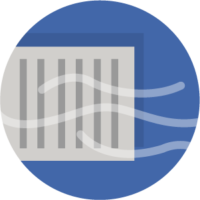
Spring Cleaning for Good Health
It’s that time of year where people begin to get motivated to clean and prepare for summer. If you’re ready for some spring cleaning, remember to add these to your list for better health!

Clean ducts and vents and replace filters in your home for cleaner, healthier air.
This is important especially for people with asthma, COPD, or other breathing issues. It is also important to have everything clean and ready for wildfire season later in the summer.

Make sure plumbing is working properly to avoid any health issues from mold growth.
Mold growing in your home has the potential to cause health problems. The key to controlling mold growth is to control moisture. Fix plumbing issues and clean leaks and spills quickly to keep mold from growing. For additional information about keeping your home free of mold visit the Environmental Protection Agency’s “A Brief Guide to Mold, Moisture, and Your Home”.

Replace batteries in smoke and CO2 detectors.
A great way to remember to keep working batteries in your smoke and CO2 detectors is to change them when daylight savings time ends. This will give you an annual reminder to make sure they are working properly to keep you and your family safe.

Organize your medicine cabinet and ask your pharmacist how to dispose of any outdated or unused medications.
The best option to dispose of medications is to utilize a drug take back program or discuss options with your pharmacist. For more information about drug take back programs and options, you can visit the Federal Drug Administration’s site on where and how to dispose of unused medications.

Remove objects and cords from walking areas, secure loose rugs, and store necessities in easy-to-reach areas for anybody who is at risk of injury from falling.
In 2019, falls among adults 65 and older were the leading cause of injury deaths for that age group. If you are concerned about yourself or a loved one falling in your home, you may also want to speak to a doctor to evaluate risk and make a plan to help. For additional tips and prevention resources visit the Center for Disease Control and Prevention’s “Older Adult Fall Prevention” page.
